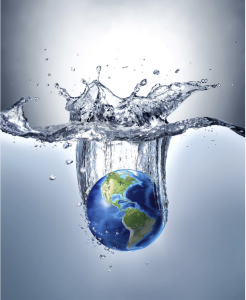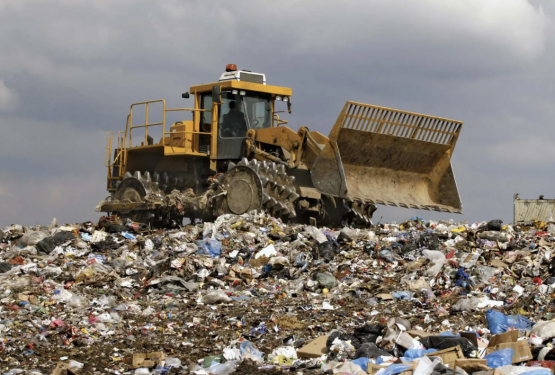
What is Water Footprint and Why Does it Demand Our Attention?
Water is one of our most precious yet most exploited resources. Everything we use or
consume requires water in their production, and with the rise of the global population, water
consumption, usage, and pollution has witnessed an alarming surge.
To keep a track of where and how much freshwater is being used or polluted, we use ‘Water
Footprint’.
Water Footprint is the total amount of freshwater utilized to produce goods and services
consumed by an individual or group. It is essentially a measure of water usage in relation to
the consumption by people, also taking into account the levels of water contamination.
To understand the availability of water, we have three types of Water Footprint
1. Green Water is water from rains that is stored in top layers of the soil and are
available for plants and crops and trees. This also includes water that is evaporated,
transpired or is already incorporated by plants.
2. Blue Water is water that we generally use. It is present as surface or groundwater
water and can be used for industries, agriculture and for day-to-day use.
3. Grey Water is polluted and generally not fit for use until further treatment.
The world has been reeling under numerous issues, and the increased pressure on its water
resources poses an alarming reminder of a troubled future.
Water pollution and overconsumption of water have led to a terrifying situation: rivers like
the Yellow River in China and the Colorado River in the U.S have stopped meeting the
oceans.
Almost half a billion people face severe water issues, yet judicious consumption of water
seems like a far-fetched reality, and the poor people are the most severely affected by it.
Around 4 billion people in the world live in physically water-scarce areas and by 2025, half
of the world’s population could be living in water-stressed regions!
Are we being fair to the planet and its people?
Reducing water footprint at every level:
1. Individual-level- They say you alone can't change the world, but you can first change
your habits and educate others! As individuals, we can make small shifts in our
routine habits and be conscious about water consumption while showering, shaving,
cooking, washing utensils, laundry, and other daily activities.
One way of doing that is by watching what you eat. The agriculture and livestock
sectors are extremely water-intensive and the amount of water used to grow that
particular commodity is its water footprint
On average, an individual eats 5000 litres of water every day.
92% of an individual’s water footprint comes from the food we choose to eat.
Meaning, when you buy a commodity with a high water footprint, your individual
water footprint would also go up. Hence it makes sense to opt for foods that consume
less water in their production. For instance, Veggies, fruits, nuts, etc., are less water-
intensive than rice, dairy products, and meat.
With that, your other commodities like clothes and electronics, too have water
footprints. Buying what you need, and reusing and refurbing items is a great solution to
reducing your contribution to water consumption while reducing waste.
1. Community-level- Each community is responsible for conserving its resources.
Governments play an essential role in strategizing ways to save water, and below are some
examples of where countries have implemented measures to conserve water:
– The European Union had long back initiated water pricing to reduce the demand. The
state members had to make sure that the industries with a negative impact on the
environment must pay penalties for irrigation and dams. They introduced the concept
of Polluters-Pay; Where the economy is growing parallel with consciousness and
responsiveness to the environment.
– Bangalore, India, is home to around 450 lakes, where people had started privatizing
lakes. It would result in lakes and marine life exploitation, making them unavailable
for conservation. With an initiative led by the Environment Support Group, the
government made it illegal to privatize lakes and established an agency to protect and
save the lakes, making them available for farms and urban communities.
– San Francisco has set up a reward system for its citizens, where individuals who
invest in energy-saving appliances are appreciated. It has also encouraged citizens to
install low-flow showerheads, water-saving toilets.
-Almost 90% of wastewater in Israel is treated for reuse, a majority of it in agricultural
irrigation.
Considering the severity of the water footprint, it becomes essential for the government and
public to be aware of its footprint and individual contributions. While some cities and
communities are better equipped with water availability, others bear the consequences of
scarcity. This necessitates the promotion of fair-sharing and proper allocation of resources.
2. Industrial level- Industries have been one of the major culprits contributing to the
water crisis, by consuming and polluting water to concerning levels. Below are the
major industries that contribute to water footprint:
Agriculture Industry: Wheat and rice are the most water-guzzling crops. Developing
nations are facing the brunt of this as countries like India and China are leading
producers and exporters of agricultural produce, resulting in irrigation stress and
depletion of land.
From farm to table, 1 kg of rice requires 2,800 litres of water and 1 kg of wheat
requires 1,654 litres of water. On a global level, this is an astounding amount of water
consumption.
Textile & Fashion Industry- This industry creates a significant water footprint and
contamination. Production of just one item of clothing – like a pair of jeans – could use
7,600 litres of water. The exorbitant buying and throwing away of clothes has only
amplified this global crisis and the big fast-fashion retailers like Zara, H&M, with
their multiple product launches throughout the year, encourage a wasteful culture that
is extremely environmentally damaging.
Beverage Industry- Junk food is a favourite amongst many, but drinks like Coke,
soda, juices require large amounts of water and agricultural additives. It takes around
680-1241 litres of water to produce two soda bottles. Drinks like beer also have a
considerable water footprint, with one litre of beer consuming 300 litres of water to be
produced.
Automobile Industry- Automobile industries require a lot of metal, paint, coating,
and treatment. Being one of the major industrial sectors, the increasing number of
vehicles is a threat to water footprint. On average, manufacturing one car could
require up to 148,000 litres of water, with the painting process being one of the most
water-intensive.
Industrial water pollution is indeed one of the major causes of water scarcity. As long as
chemicals, toxins and microfiber plastic-laden water enters our water bodies, the fight for
freshwater will continue. However, all is not lost, as there are companies who are owning up
their water usage by reusing water. Levis, one of the leading denim brands, is saving billions
of litres of water by recycling and reusing water to make jeans.
Many such companies are stepping up and taking initiatives, but there is a need to do more.
A collaborative effort from every level, industry and community is the need of the hour. To
meet global water demands, the governments must impose strict industrial regulations, foster
advanced technological innovations; development and adoption, monitor and actively engage
individuals and organizations towards a shift in mindset.
 English
English French
French German
German

